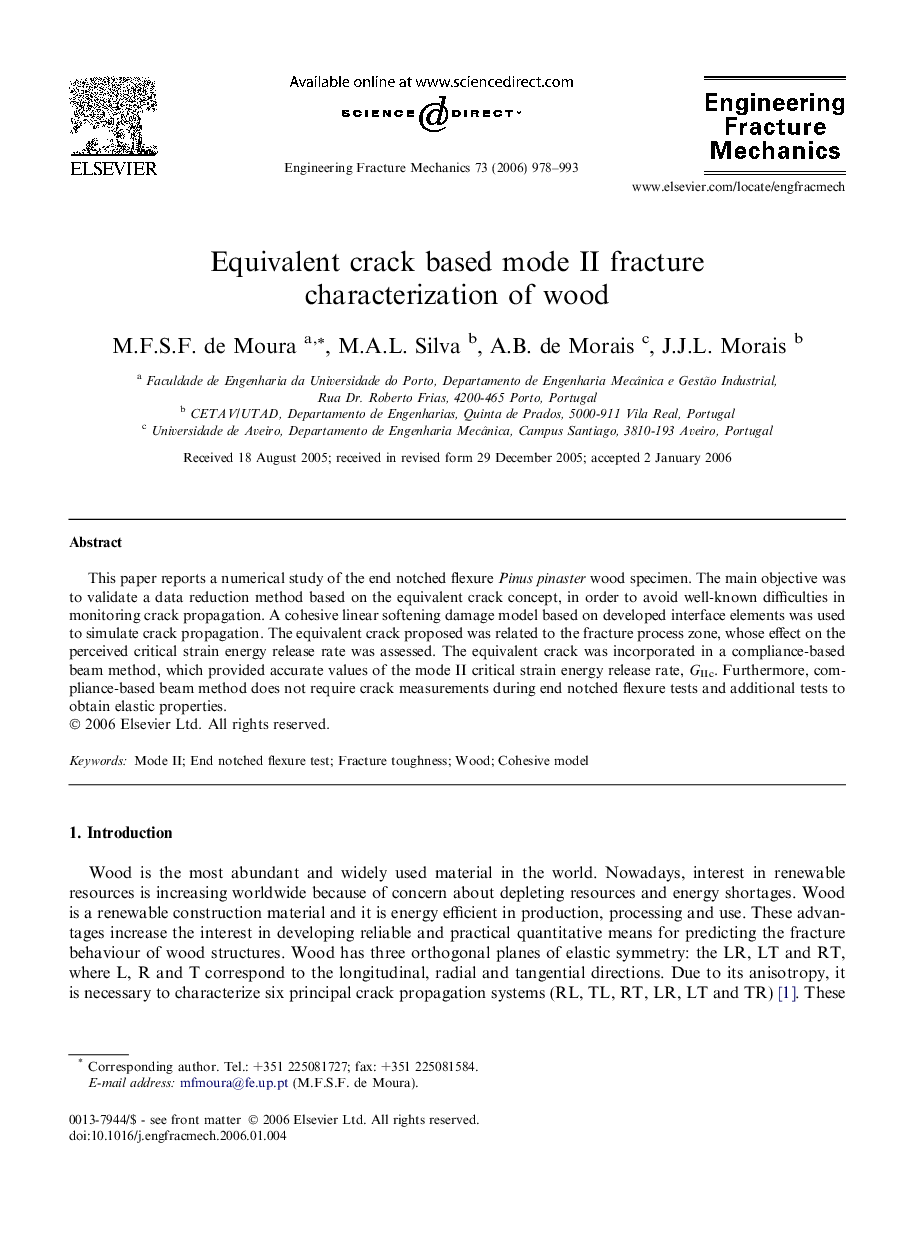| Article ID | Journal | Published Year | Pages | File Type |
|---|---|---|---|---|
| 771577 | Engineering Fracture Mechanics | 2006 | 16 Pages |
This paper reports a numerical study of the end notched flexure Pinus pinaster wood specimen. The main objective was to validate a data reduction method based on the equivalent crack concept, in order to avoid well-known difficulties in monitoring crack propagation. A cohesive linear softening damage model based on developed interface elements was used to simulate crack propagation. The equivalent crack proposed was related to the fracture process zone, whose effect on the perceived critical strain energy release rate was assessed. The equivalent crack was incorporated in a compliance-based beam method, which provided accurate values of the mode II critical strain energy release rate, GIIc. Furthermore, compliance-based beam method does not require crack measurements during end notched flexure tests and additional tests to obtain elastic properties.
